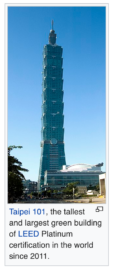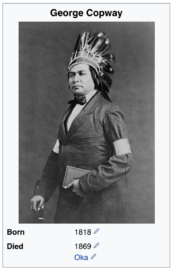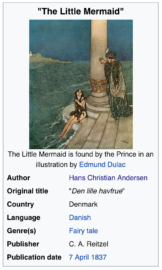Wiki Rabbit Hole: Reclaimed Lumber to The Little Mermaid
Turn a borderline-addictive habit into an opportunity to learn more about the world.
It’s been a while since I performed my last Wiki Rabbit Hole exercise, but I noticed something: I referenced information I learned on multiple occasions. It worked for me—and it’s fun!
Here’s a refresher on the concept:
I often used Wikipedia to learn about something specific only to look up at the clock and discover I diverged from the initial path. This is commonly known as the Wiki Rabbit Hole or Wikihole. Instead of feeling somewhat disappointed with my reckless use of time, I framed my borderline-addictive habit into a constructive manner. For 45 minutes, I’m allowed to go anywhere on Wikipedia and learn as much as I can.
Ready?
Go!
I waited for inspiration to strike. I was sitting at a table inside Whole Foods Market. Then, I noticed a sign on the wall. “Almost all the decorative wood in the store is ash, reclaimed from barns and agricultural building structure beams in the United States and Canada.” Interesting, I thought.
Link 1: Reclaimed Lumber
 I feel like “reclaimed” wood has become a trendy buzzword. I wanted to learn more about its background. “Most reclaimed lumber comes from timbers and decking rescued from old barns, factories, and warehouses.” It makes sense that wood has always been the primary building material in the United States and Canada. We have large forests! As someone who loves archeology, it reminds me why there aren’t many large monuments of ancient people found here: wood decays.
I feel like “reclaimed” wood has become a trendy buzzword. I wanted to learn more about its background. “Most reclaimed lumber comes from timbers and decking rescued from old barns, factories, and warehouses.” It makes sense that wood has always been the primary building material in the United States and Canada. We have large forests! As someone who loves archeology, it reminds me why there aren’t many large monuments of ancient people found here: wood decays.
Longleaf pine, redwood, and oak have been the three most commonly used types of wood for building materials. Because of my Midwest roots, I’m most familiar with Oak; whereas, the other two grow in the west. Slow-growing trees make the best wood—highly durable and strong. I know this because my dad talks about Oak trees all the time. Twenty years ago he planted two oak trees near each other on Labor Day, hoping they’d grow in time for his retirement so he could tie a hammock between them—they’re almost there.
Reclaimed wood is popular for many reasons, including its “unique appearance and physical characteristics.” Selling reclaimed lumber began on the East Coast in the early 1970s and gained momentum in the 1980s on the West Coast. Deconstructing buildings instead of demolition became more economical in the 1990s, and that moved the needle. And then in the 2000s, green building became big!
Link 2: Green Building
 Pretty straightforward. From planning, construction, operation, and demolition, architects consider the most efficient environmental and economic ways to do things. Buildings account for 18% of global emissions but that number will jump dramatically within 30 years if we don’t pursue more sustainable means. Simple things like window and wall placement can make an impact. I became aware of sustainable design in 2008 when a new building on DePaul’s campus was marked LEED certified (Leadership in Energy and Environmental Design).
Pretty straightforward. From planning, construction, operation, and demolition, architects consider the most efficient environmental and economic ways to do things. Buildings account for 18% of global emissions but that number will jump dramatically within 30 years if we don’t pursue more sustainable means. Simple things like window and wall placement can make an impact. I became aware of sustainable design in 2008 when a new building on DePaul’s campus was marked LEED certified (Leadership in Energy and Environmental Design).
Link 3: Tragedy of the Commons
This sounds like a 19th century English phrase right? Guess what? You’re right! Economist, William Forster Lloyd declared it in 1833. It’s a social science term to describe how individuals acting in the own self-interest can deplete the resources for the rest of the population. His argument was the unregulated grazing on “common” land in Great Britain and Ireland would cause harm in the long run. It’s been used to analyze behavior in a number of fields. If you’re aware of the Inclosure Acts, this argument helped shift the land owning rights to British aristocracy. Poor peasants could longer make a living where their families had for sometimes centuries and led to urbanization.
Link 4: Over-fishing
Over-fishing is one result of the “Tragedy of Commons” concept. The most notable examples are in the East China Sea, the east coast of Canada, and the North Sea along Europe. Over-fishing not only depletes the fish stock but hurts the fishing communities in the region who rely on the harvest for a living. It also has the devasting potential of collapsing whole marine ecosystems. What popped out to me most was the extinction of Blue Walleye from the Great Lakes in the 1980s. I’ve been familiar with Walleye fish in general but not Blue Walleye—that was before my time.
Link 5: Great Lakes
 I went in a different direction. I wanted to know a tad more about the geography of the region I call home. Here are some fun facts:
I went in a different direction. I wanted to know a tad more about the geography of the region I call home. Here are some fun facts:
- The Great Lakes comprise 21% of the world’s fresh water (by volume)
- They formed about 14,000 years ago when ice sheets receded
- They contain about 35,000 islands
- The surface area of all five lakes is about the size of the United Kingdom and France combined
Lake Michigan gets its name from the Ojibwe word “mishi-gami,” meaning “great lake” or “large lake.”
Link 6: Ojibwe
Ojibwe is an indigenous North American language within the Algonquin language family. It was mainly spoken in Canada and the Great Lakes region of the United States. I’ve heard of Ojibwe before as a people but not as a language. It’s the fourth most popular indigenous language still used today in North America, behind Navajo, Inuit, and Cree.
Link 7: George Copway
 Under Notable Objibwe Speakers George Copway stuck out to me; his titles of chief, writer, and cultural ambassador poked my curiosity. His memoir, The Life, History and Travels of Kah-ge-ga-gah-Bowh (1847), was the first book published by a Canadian First Nations person. It detailed the traditional culture and history of the Ojibwa and became a bestseller; he toured and lectured throughout the United States and Europe. Just last year, Canada named him a National Historic Person.
Under Notable Objibwe Speakers George Copway stuck out to me; his titles of chief, writer, and cultural ambassador poked my curiosity. His memoir, The Life, History and Travels of Kah-ge-ga-gah-Bowh (1847), was the first book published by a Canadian First Nations person. It detailed the traditional culture and history of the Ojibwa and became a bestseller; he toured and lectured throughout the United States and Europe. Just last year, Canada named him a National Historic Person.
Link 8: First Nations
I became more familiar with this area after reading American Nations by Colin Woodard. First Nations refers to the collective indigenous communities south of the Arctic Circle within Canada. Much of their culture is still practiced and intact, even after European settlement. I think that’s cool.
Link 9: Sagas of Icelanders
Before Christopher Columbus reached America in 1492, Northern Europeans reached the land around 1000 AD. In a saga, also known as a story, Icelanders were blown off course on their way to Greenland during a summer. The explorers relied heavily on the native population for trade and sustainable resources. It seems like wasn’t really until colonization that Europeans exploited native Americans.
Link 10: The Little Mermaid
 I made a hop, skip, and jump from Norse Saga to Hans Christian Andersen to The Little Mermaid. I took an English class about fairytales during my freshman year of college. I remembered them being dark, unlike the fun Disney versions of each. The Little Mermaid proved my memory right. The mermaid gives up her identity in order to become human and be with the prince; however, she grows sad and kills herself with a knife. Yikes.
I made a hop, skip, and jump from Norse Saga to Hans Christian Andersen to The Little Mermaid. I took an English class about fairytales during my freshman year of college. I remembered them being dark, unlike the fun Disney versions of each. The Little Mermaid proved my memory right. The mermaid gives up her identity in order to become human and be with the prince; however, she grows sad and kills herself with a knife. Yikes.
On that positive note, my 45 minutes concluded. I feel earthy. Colors of green, blue, and brown paint my mind. Climate Change is such a big issue right now. The links I visited today speak to my common sense: don’t be wasteful. Even though our world has changed since Nordic people first explored North America and the Ojibwe language could be heard throughout the Great Lakes, we can still take steps to ensure that natural resources will remain for generations ahead.
The point of the exercise is to generally learn more about the world around me. It’s not to become an expert on any of the particular wiki subjects I stumble across. I hear there are two philosophies to live life by: know everything about one subject or know a little about many subject. I prescribe to the latter. It’s not because I feel it’s better—there’s no right or wrong—but I find myself interested in a lot of things. I’m curious to learn more about them. Performing this wiki rabbit hole activity gives me a guilt-free opportunity to set aside time to let my curiosity loose and have fun.
Do you ever go down a wiki rabbit hole on purpose? What are some of the things you’ve learned? What topics excite you most?